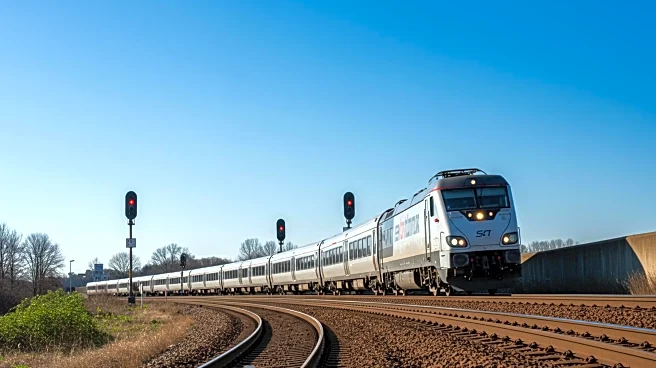What is the story about?
What's Happening?
The Association of American Railroads (AAR) has reported an increase in U.S. rail carload and intermodal volumes for July, marking a positive shift in the industry. According to the Rail Industry Overview (RIO), the Freight Rail Index (FRI) saw a 4.0% annual increase, the first in four months. U.S. rail carloads reached approximately 1,098,947, a 4.6% annual gain, continuing a five-month streak of growth. The intermodal volume also rose by 2.4% annually, recovering from a 2.9% decline in June. The AAR attributes this recovery to factors such as the normalization of port activities and a drawdown in business inventories during the second quarter.
Why It's Important?
The increase in rail volumes is a significant indicator of economic resilience, suggesting that goods movement remains robust despite potential economic headwinds. This growth in rail traffic is crucial for the U.S. economy, as it reflects underlying demand and the health of supply chains. The rail industry serves as a barometer for economic activity, and its performance can influence policy decisions and business strategies. The recovery in intermodal volumes, in particular, highlights the adaptability of the logistics sector in response to fluctuating import levels and inventory adjustments.
What's Next?
Looking forward, the rail industry may face challenges from sustained pressure on labor markets and consumer demand, which could impact freight activity. Stakeholders will likely monitor these developments closely, as any shifts could affect transportation strategies and economic forecasts. The AAR's ongoing reports will continue to provide valuable insights into the industry's trajectory and its implications for the broader economy.
AI Generated Content
Do you find this article useful?















